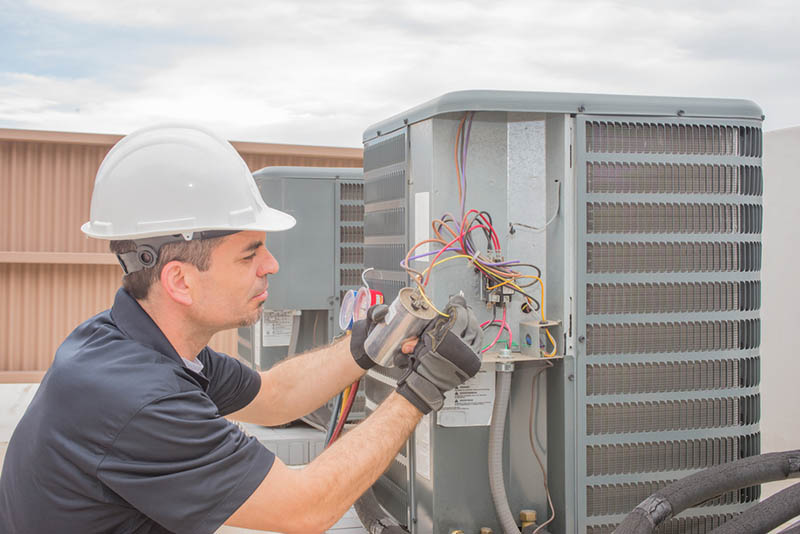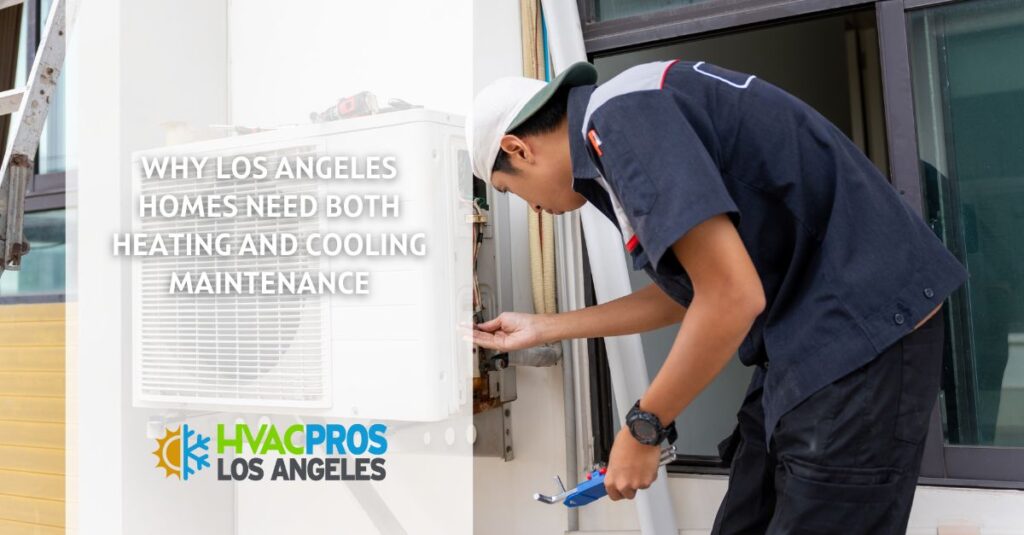Los Angeles enjoys some of the most enviable weather in the country. With average winter temperatures hovering in the 60s and summer highs rarely exceeding 85 degrees near the coast, it’s easy to assume your HVAC system can coast through the seasons without much attention. However, neglecting HVAC maintenance can cost homeowners thousands of dollars every year.
This assumption costs homeowners thousands of dollars every year.

While LA’s Mediterranean climate is undeniably pleasant, your heating and cooling systems work year-round to maintain comfort. The mild temperatures don’t eliminate the need for maintenance—they simply mask the gradual decline in efficiency that occurs when systems go unchecked. By the time you notice a problem, you’re often looking at expensive repairs or complete system replacement.
Professional heating and air conditioning repair in Los Angeles isn’t just about fixing what’s broken. It’s about preventing costly breakdowns, maintaining energy efficiency, and ensuring your system operates reliably when you need it most. Whether it’s a surprise cold snap in January or an unexpected heatwave in October, properly maintained HVAC systems respond when called upon.
The Hidden Costs of Skipping HVAC Maintenance
Many Los Angeles homeowners operate under the misconception that mild weather equals minimal wear on their HVAC systems. This couldn’t be further from the truth. Even systems that run less frequently accumulate dust, develop component wear, and experience efficiency losses that compound over time.
Energy Efficiency Degradation
An unmaintained HVAC system loses approximately 5% of its efficiency each year. For a system that initially operated at 90% efficiency, this means dropping to 80% efficiency after just two years without service. In practical terms, this translates to significantly higher utility bills and reduced comfort levels throughout your home.
Dirty air filters alone can reduce system efficiency by up to 15%. When filters become clogged with dust, pet dander, and other airborne particles, your system works harder to circulate air. This increased workload not only drives up energy costs but also accelerates wear on critical components like the blower motor and heat exchanger.
Component Wear and Premature Failure
HVAC systems contain numerous moving parts that require regular lubrication and adjustment. Belts stretch, bearings wear down, and electrical connections loosen over time. Without periodic maintenance, these minor issues cascade into major system failures.
Consider the condensate drain, a component many homeowners never think about. In LA’s dusty environment, these drains frequently become clogged with debris. A blocked drain can cause water damage to your home and force your system to shut down unexpectedly. What starts as a simple cleaning task during routine maintenance becomes an emergency repair call when neglected.
Indoor Air Quality Concerns
Los Angeles faces unique air quality challenges, from seasonal wildfires to urban pollution. Your HVAC system serves as your home’s primary defense against outdoor contaminants, but only when properly maintained. Dirty filters and neglected ductwork can actually worsen indoor air quality, circulating dust, allergens, and pollutants throughout your living space.
The Case for Biannual Tune-Ups
Professional HVAC maintenance twice per year—once before summer and once before winter—provides the most comprehensive protection for your investment. This schedule aligns with your system’s seasonal demands and catches potential issues before they become expensive problems.
Spring Maintenance: Preparing for Cooling Season
Spring tune-ups focus on your air conditioning components, ensuring they’re ready for increased summer usage. Technicians clean evaporator coils, check refrigerant levels, and test electrical connections that may have loosened during months of reduced operation.
During a recent spring service call in Beverly Hills, our technicians discovered a refrigerant leak that had gone undetected for months. The homeowner had noticed slightly higher utility bills but attributed them to rate increases. The leak repair cost $300—significantly less than the $4,000 compressor replacement that would have been necessary if the system had continued operating with low refrigerant levels.
Fall Maintenance: Heating System Preparation
Fall maintenance addresses your heating components, which may sit idle for months between uses. Gas furnaces require particular attention, as unused burners can accumulate dust and debris that affects combustion efficiency and safety.
One longtime client in Santa Monica learned this lesson firsthand. After skipping fall maintenance for three years, their furnace failed during an unusually cold February. Emergency repair costs exceeded $1,200, and the family endured two days without heat while waiting for parts. Regular maintenance would have identified the failing heat exchanger before it became a safety hazard.
Real Customer Experiences
Sarah, a homeowner in West Hollywood, initially questioned the need for regular HVAC maintenance. “We barely use our heater,” she told us. “Maybe two weeks out of the year, if that.” However, after her air conditioning system failed during a July heatwave, she reconsidered her approach.
The emergency repair revealed multiple issues that had developed over three years of deferred maintenance: a damaged capacitor, dirty evaporator coils, and a refrigerant leak. The total repair bill came to $1,800—more than five years of preventive maintenance would have cost.
“I thought I was saving money by skipping tune-ups,” Sarah reflects. “But one emergency call wiped out all those imaginary savings and then some. Now I schedule service every spring and fall religiously.”
Professional Maintenance vs. DIY Approaches
While homeowners can handle basic tasks like filter replacement, comprehensive HVAC maintenance requires professional expertise and specialized tools. Licensed technicians can identify subtle signs of wear that untrained eyes miss, perform safety tests that require calibrated instruments, and make adjustments that optimize system performance.
Many manufacturers require professional maintenance to maintain warranty coverage. Attempting DIY repairs or using unlicensed contractors can void these warranties, leaving you responsible for expensive repairs that should have been covered.
Choosing the Right HVAC Service Provider
When selecting a heating and air conditioning repair service in Los Angeles, look for companies that understand the unique demands of the local climate. Coastal humidity, inland temperature swings, and seasonal air quality challenges all affect how HVAC systems operate in Southern California.
As your neighbors in Los Angeles, we know how important your time is. Everyone’s so busy. That’s why we make sure we’re fully prepared when we show up at your location for the first time. We’ll locate what’s causing the problem, give you a free quote, and solve the problem quickly. That’s the kind of HVAC repair Los Angeles deserves.
Taking Action: Your Next Steps
Don’t wait for your system to fail before addressing maintenance needs. Start by checking your air filters—if they haven’t been changed in the last three months, replace them immediately. Next, schedule a comprehensive tune-up with a licensed HVAC professional who can assess your system’s current condition and recommend a maintenance schedule tailored to your specific equipment and usage patterns.
Consider enrolling in a maintenance agreement that provides priority service, discounted repairs, and automatic scheduling for seasonal tune-ups. These programs typically pay for themselves through improved efficiency and reduced emergency repair costs.
Your HVAC system represents a significant investment in your home’s comfort and value. Protecting that investment with regular maintenance isn’t just smart—it’s essential, regardless of how mild Los Angeles winters

